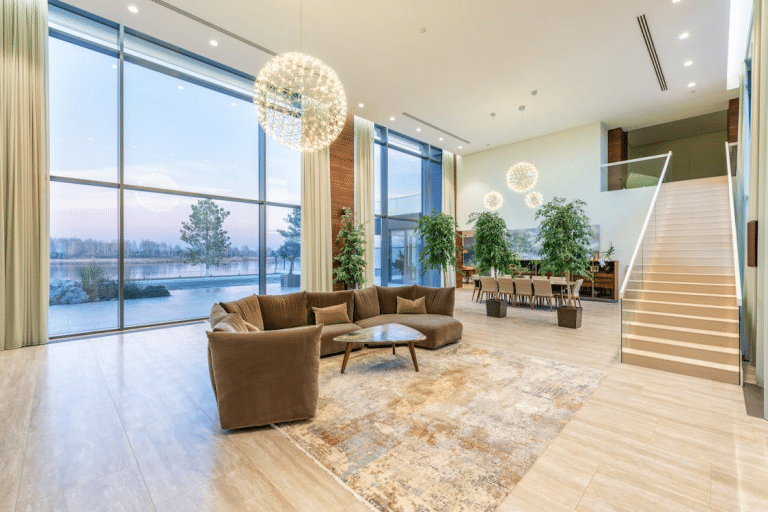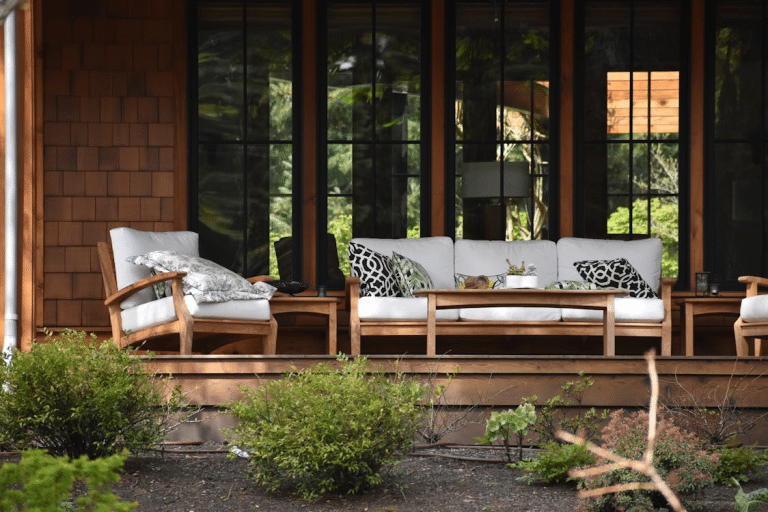A room can have all the right ingredients with nice furniture, good lighting, and plenty of character, but if the styles don’t work together, the space quickly feels confusing. Visual harmony is what makes a home inviting, and when that balance is missing, the eye doesn’t know where to land. Instead of comfort, the result is distraction.
It’s a common problem when pieces are picked one at a time without thinking about the whole picture. That new chair or bold color may look appealing in the store, but once it’s in the room, it may fight against everything else. Understanding how mismatched styles create visual noise can help homeowners avoid choices that break the flow.
Pairing Heavy Décor with Minimal Spaces
Minimal spaces are designed to breathe. They rely on openness, clean lines, and lighter elements. Dropping in a massive armoire or a chandelier full of ornate detail instantly breaks that balance. Instead of calm, the room feels cramped, and the simplicity that defines minimalism disappears.
Matching the weight of décor to the space matters. Smaller-scale items, simple artwork, or furniture with legs that lift it off the floor keep the room feeling open.
Choosing the Wrong Furniture Pieces
Furniture carries the most weight in a room, literally and visually. A bulky sofa in a small room or a sleek table in a rustic setting can throw the entire balance off. When the main pieces don’t connect with the overall style, everything else feels unsettled, no matter how carefully accents are chosen.
Shopping with a plan makes a big difference. Local furniture stores are often the best place to start because they carry collections that reflect different styles while still offering cohesive choices. Swann’s Furniture & Design, for example, is known for curating pieces that work well together. Looking at full room setups in a showroom can help prevent the kind of mismatched furniture choices that cause a room to look disjointed.
Mixing Clashing Color Palettes
Color is often where mismatches are most obvious. A room painted in muted earth tones with bright neon accents can feel chaotic, no matter how well the furniture fits. Clashing colors don’t allow the eye to rest, and instead of noticing the design, people are distracted by the disconnection.
A smoother approach is to build a palette around one or two anchor shades and add accents that support rather than compete. Neutral bases like whites, grays, or soft beiges can help balance bolder choices.
Combining Modern and Vintage Items
Combining modern and vintage pieces can look striking, but without a common thread, it often turns messy. A glass coffee table beside a carved, antique cabinet highlights the contrast so strongly that neither piece feels comfortable in the same room.
The trick is to link the eras through material or color. For example, a modern sofa in a neutral tone pairs more easily with a vintage rug in complementary shades.
Decorative Accents That Feel Out of Place
Accents are supposed to tie a room together, but when they don’t fit, they do the opposite. A tropical print pillow in a room filled with industrial décor or a gold-framed mirror in a farmhouse-style space can feel random rather than thoughtful. Instead of adding charm, the accents call too much attention to themselves.
Small touches work best when they echo other elements in the room, similar materials, matching colors, or repeated shapes. Without that link, accents look like afterthoughts. A few well-chosen pieces usually have more impact than scattering items that belong to entirely different styles.
Different Flooring Styles
Jumping from dark hardwood in one room to pale tile in the next, without a transition, can make the home feel choppy. The break in flow makes the layout feel less connected.
Transitions don’t have to mean matching everything, but they should soften the shift. Using trim, rugs, or tones that complement each other helps create smoother movement from room to room.
Wall Art That Doesn’t Match
Artwork is often personal, but when the style clashes with the rest of the room, it becomes a distraction. A bright abstract piece in a traditional room filled with muted tones or a rustic farmhouse print in a sleek, modern setting can feel disconnected.
Choosing art that reflects the colors or mood of the room makes it part of the design rather than a separate statement. Size matters too, as art that is far too small or much too large throws off the balance of the walls.
Mismatched Hardware
Hardware often seems like a small detail, but inconsistent choices stand out. A mix of brass, chrome, and matte black knobs and handles across the same kitchen or bathroom creates visual noise. Instead of tying the room together, the hardware highlights the mismatches.
Choosing one consistent finish, or limiting to two that complement each other, creates a cleaner look. Cohesion in the small details makes the bigger design feel more polished.
Mixing Ornate Details
Ornate details can be beautiful, but placing them next to ultra-simple finishes often feels unbalanced. A carved, heavy dining table surrounded by plastic minimalist chairs highlights the clash in style. Neither piece looks comfortable in the setting.
Blending styles works better when one leads the way. If the room leans ornate, simpler items should echo some of that detail. If it leans minimal, ornate touches should be subtle and limited.
Inconsistent Use of Metallic Finishes
Metals can add elegance and shine, but when too many finishes are mixed in one room, the result is scattered. A gold light fixture, silver cabinet pulls, and bronze side tables fight for attention rather than working together.
Picking one main finish and introducing another sparingly helps create order. When metals are repeated in more than one place, the eye reads them as intentional rather than random. Too many different finishes make the space feel busy instead of refined.
Themes That Shift Dramatically
A beach-inspired living room, followed by a rustic dining room and a modern kitchen, makes the house feel like three separate spaces.
That doesn’t mean every room must look the same, but some continuity helps. Carrying a color, material, or recurring detail throughout ties the rooms together. Without that, the house feels like a patchwork rather than a connected home.
Overcrowding with Items
Adding too many items from different styles is one of the fastest ways to create confusion. A little of everything, like industrial lamps, farmhouse tables, mid-century chairs, and bohemian rugs, all in one room, makes it impossible to focus. The eye doesn’t know what to follow.
Editing is key. Choosing fewer pieces that share some kind of connection allows each style to shine without competing. A room doesn’t need to display every influence at once.
When furniture, finishes, and accents share a connection, the room feels comfortable and complete. Avoiding mismatches doesn’t mean avoiding variety, but choosing with intention. That’s what turns a collection of pieces into a cohesive design that feels good to live in.













